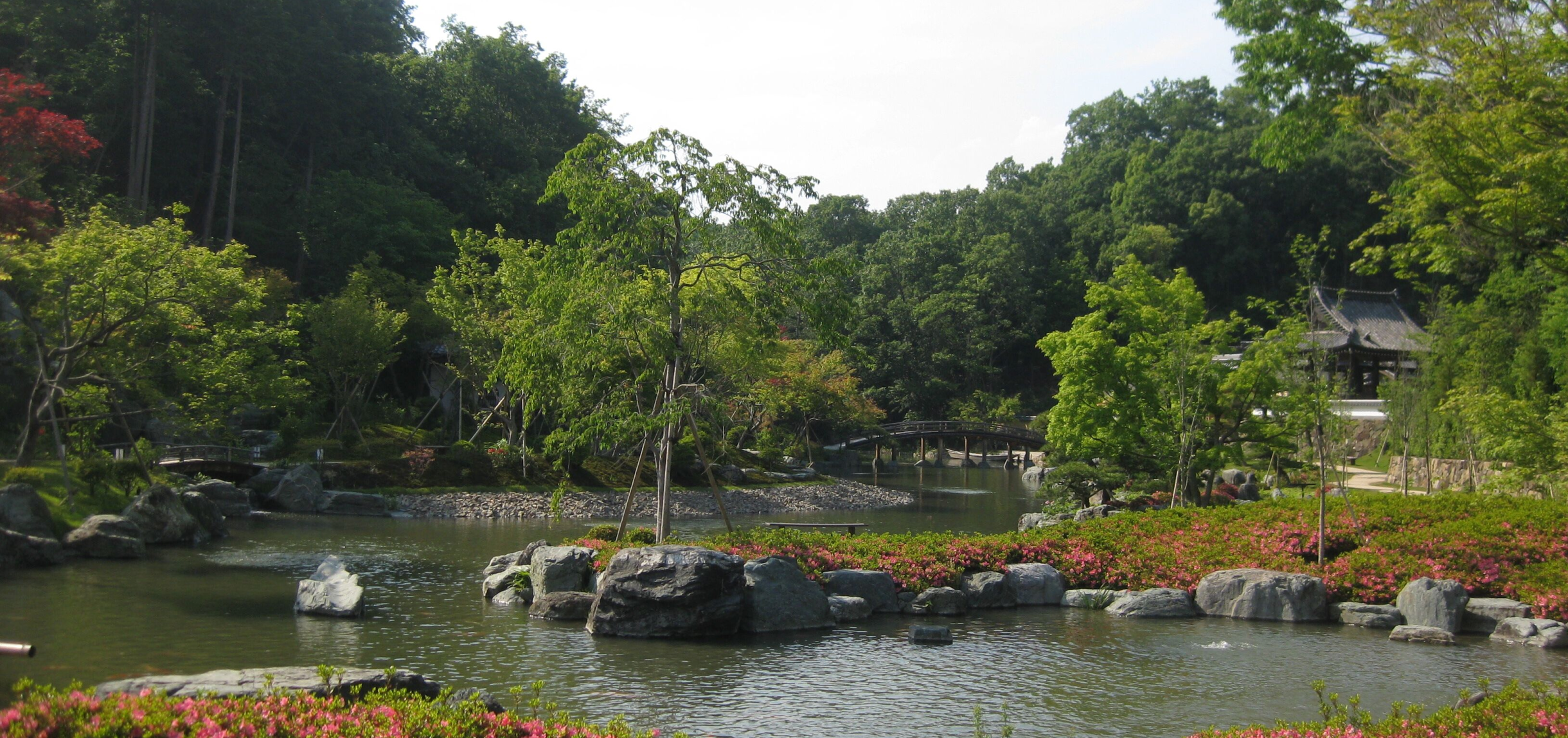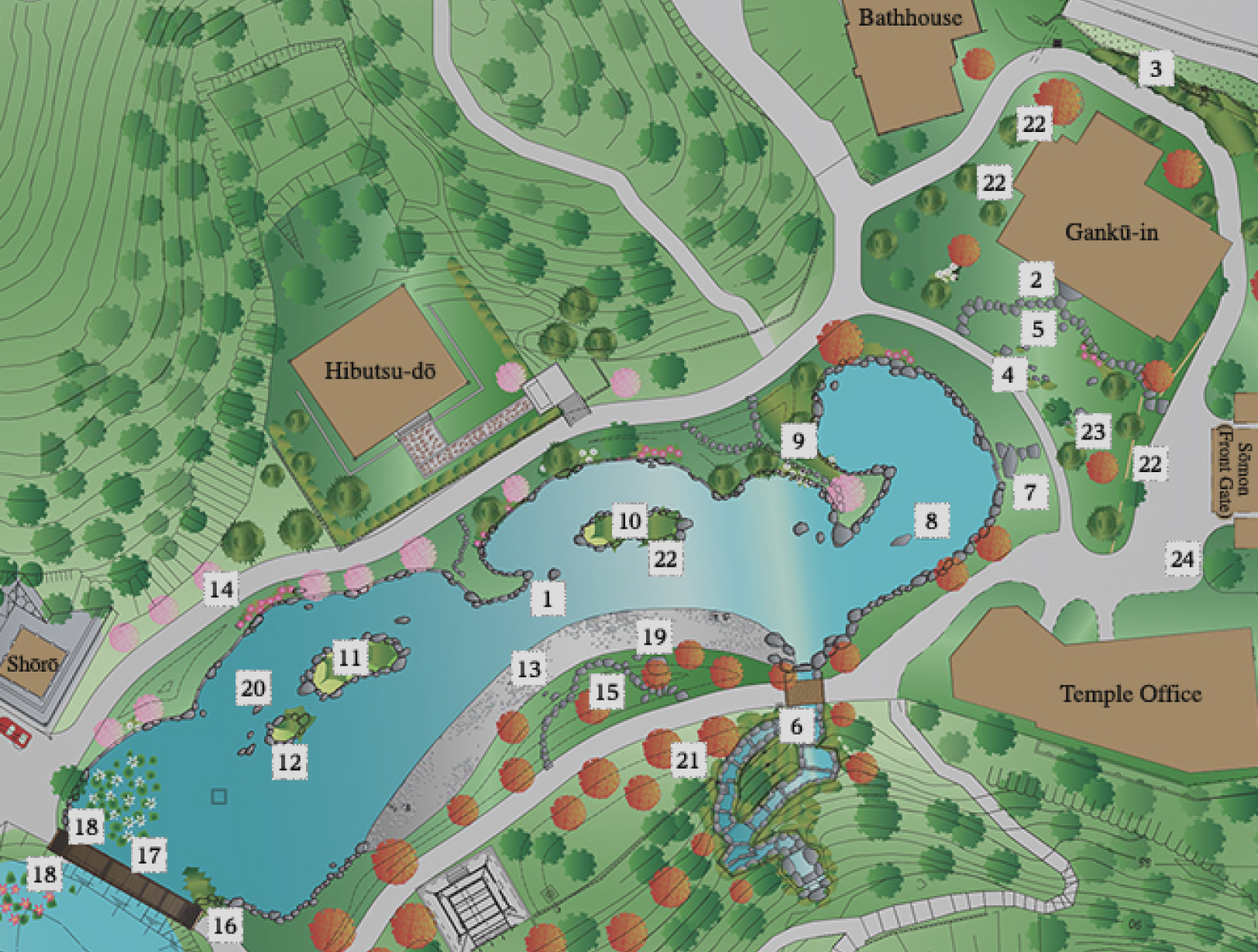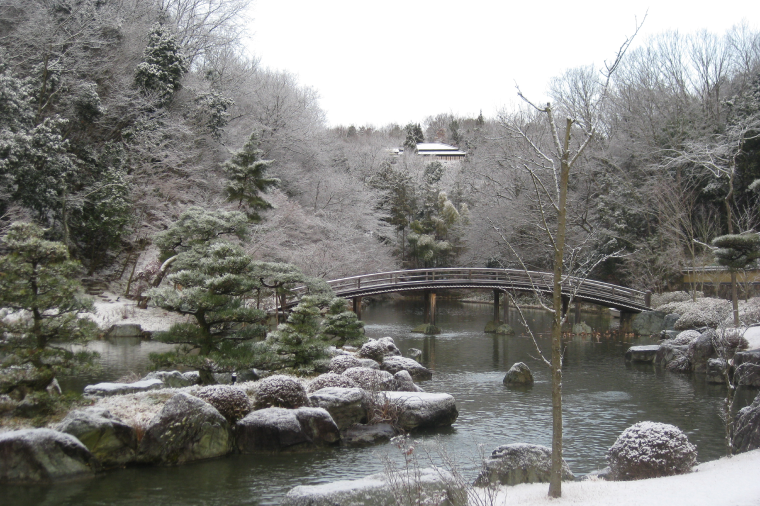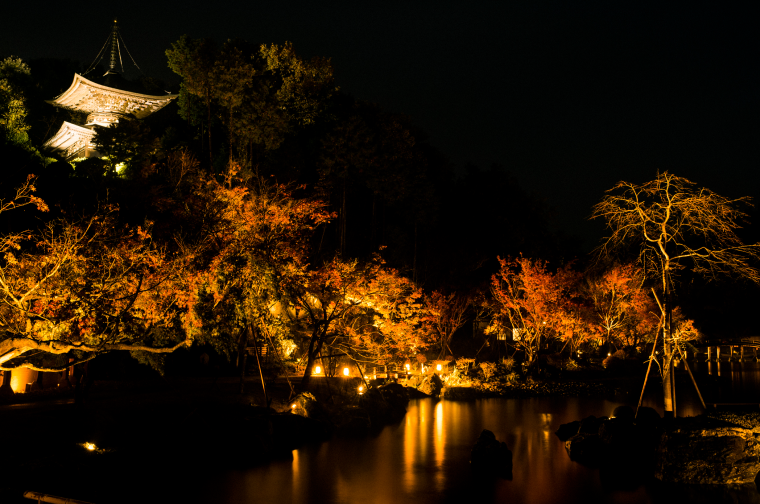
EXPLORE
ARCHITECTURE
Shoshintei
The Shoshintei, a garden centered around a heart-shaped pond, was created by Shiro Nakane and Yukihiro Nakane. At Shinshoji Zen Museum and Gardens, you can see the gardens of three generations in one place, starting with Kinsaku Nakane, who created the Karesansui garden at Mumyoin.
Shoshintei (Garden of the Appreciating Heart)
【 Shoshintei 】

1.Heart Character Pond
A garden pond shaped like the Chinese character for "heart." It expresses the great ocean, which is expansive like the heart. It also serves as a dividing pond along with the northern area's old pond.
2.Large Stepping Stone
A large stone moved from the old Kaiki-do (Founder's Hall). By chance, rain has continued to carve holes in the same places it did when the stone was in its old location.
3.Tea Garden
A tea plant garden, where seeds carefully brought back from China are planted—just as Master Eisai did in the ancient past. Every year the garden owner picks fresh tea for everyone to enjoy.
4.Nine Mountain Stones
Ten stones placed in front of Gankuin. They symbolize Japan's famous Mt. Fuji, the Three Mountains of Yamato (Mt. Kagu, Mt. Unebi, and Mt. Miminashi), and the Five Great Mountains of China (the eastern Mt. Tai, the southern Mt. Heng, the central Mt. Song, the western Mt. hu, and the northern Mt. Heng).
5.Worshiping Rock
A symbolic place for worshiping the Tower of Prabhūtaratna located above the Dragon Flower Waterfall.
6.Dragon Flower Waterfall
This waterfall was named with the hope that visitors will hear its sound and acquire a Buddha-mind, just like the sentient beings who are said to have reached buddhahood after listening to the sermon delivered by Miroku Buddha under the Dragon Flower Tree.
7.Boat Landing
Boats departed from this landing bound for the islands of gods and immortals.
8.Departed Boats Stone
The rhododendron indica flowers that bloom on this bank resemble casks. They are one of Su Shi's sixteen "items to be be appreciated by the heart."
9.Flower Bank Cask
The rhododendron indica flowers that bloom on this bank resemble casks. They are one of Su Shi's sixteen "items to be be appreciated by the heart."
10.Penglai Island
One of the three islands of gods and immortals that are said to be far east of China in the ocean.
11.Fangzhang Island
It was believed that these islands of gods and immortals overflow with gold and silver treasures, and hold a miraculous medicine for agelessness and immortality.
12.Yingzhou Island
The islands of gods and immortals were placed in the garden pond to pray for the prosperity and long life of donors and visitors.
13.Sandbank Beach
The sandbank beach, which stretches on like a rocky coastline, expresses the difficulty of going to the islands of gods and immortals.
14.Spring Road
This road fills with blooming cherry blossoms. They express the life stages of cyclic existence: budding (birth), full bloom (growing up), and scattering (death).
15.Autumn Leaves Mountain
In the fall, this mountain is covered in beautiful leaves. It expresses the magnificent Pure Land of Bliss and enlightenment.
16.Hidden Dragon Pine
A pine tree received as a gift from the former residence of Miyazawa Kiichi. Its long gracefulness brings to mind a hidden dragon.
17.Dragon's Back Bridge
This beautifully curved bridge looks like the back of a dragon that has begun to soar towards the International Zen Training Hall.
18.Crimson and White Lotus Flowers
In front of the temple gate, there are crimson lotus flowers on the right bank, and white lotus flowers on the left bank. They are symbolically significant in Buddhist thought as plants that, while emerging from the muck, bloom purely and beautifully without being soiled.
19.Zazen (Seated Meditation) Rock
A large rock placed on top of moss near the Sandbank Beach. On the sides of the temple gate a triple trunk Japanese cedar is planted that is similar to the red pine depicted in the "Tree Zazen Statue" of Saint Myoe of Toganoo.
20.Mt. Sumeru Rock
Mt. Sumeru is a holy mountain in Buddhist cosmology. Made out of the four treasures (gold, silver, lapis lazuli, and crystal), it is said to be the home of the Thirty-three Celestials that are led by the Four Heavenly Kings and Indra. A floating rock also representing Mt. Sumeru and inscribed with the Chinese characters for "the rock of the nine mountains and eight seas" can also be found in the garden at Kinkaku-ji.
21.Carp Stones
Carp are said to transform into dragons and reach heaven after climbing the Dragon's Gate Waterfall. These stones depict carp beginning their climb.
22.Shinshoji Temple Fence
Inspired by the bamboo fence at Koetsu-ji in Takagamine, Kyoto, this unique design that weaves together a high number of bamboo spikes is a favorite of the garden owner.
23.Pine, Bamboo, and Apricot Tree (The Three Friends of Winter)
The pine tree and bamboo plant stay green even in the cold, and the fragrant apricot tree blooms even in cold seasons. Collectively, these are called the "Three Friends of Winter." In China, they are seen as representing the spirit of gentlemen, and in Japan they are considered symbols of happiness and wealth.


Shiro Nakane
Born in 1950 in Kyoto city. Director of Nakane Research & Landscape Consultant Co. and Japanese Garden Association.After graduating in 1975 from the Department of Philosophy of Gakushuin University's Faculty of Letters, he jointed the Nakane Research & Landscape Consultant Co. As part of his work there, he carried out garden design and construction, shrine and temple garden maintenance / management, surveys, preservation, and repairs of old gardens, and the restoration of giant ancient trees. At the same time, he also wrote about the elements and flow of gardens from January 1991 to March 1997 in Tea Ceremony Magazine. Many of his writings have been published by tea ceremony-related publishers. In Japan he teaches at training workshops for specialists, and is also being invited more and more to give lectures in Europe, the United States, and China.